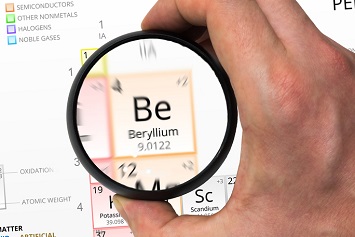Days before compliance is required with its major rule, Occupational Exposure to Beryllium (January 9, 2017, FR), OSHA has published a direct final rule (DFR) clarifying provisions affecting trace amounts of beryllium materials in general industry workplaces. Specifically, the DFR amends the definition of beryllium work area as well as terms affected by that change.
The 2017 final rule established new permissible exposure limits (PELs) of 0.2 micrograms of beryllium per cubic meter of air (0.2 µg/m3) as an 8-hour time-weighted average (TWA) and 2.0 µg/m3 as a short-term exposure limit (STEL) determined over a sampling period of 15 minutes. It also included provisions to protect employees from exposure to beryllium, such as requirements for exposure assessment, methods for controlling exposure, respiratory protection, personal protective clothing and equipment, housekeeping, medical surveillance, hazard communication, and recordkeeping.
Industry Expresses Concern
In the 2017 action, OSHA defined beryllium work area as “any work area containing a process or operation that can release beryllium where employees are, or can reasonably be expected to be, exposed to airborne beryllium at any level or where there is the potential for dermal contact with beryllium.” The 2017 rule also provided that the standard did not apply “to materials containing less than 0.1% beryllium by weight where the employer has objective data demonstrating that employee exposure to beryllium will remain below the action level as an 8-hour TWA under any foreseeable conditions.”
Following publication of the 2017 rule, stakeholders told OSHA that the final rule’s definition of beryllium work area could be unintentionally read as applying to materials with only trace amounts of beryllium. OSHA agreed that this was not the intention of the 2017 rule. Accordingly, the DRF amends the definition as follows:
“Beryllium work area means any work area: (1) Containing a process or operation that can release beryllium and that involves materials that contain at least 0.1% beryllium by weight; and (2) where employees are, or can reasonably be expected to be, exposed to airborne beryllium at any level or where there is the potential for dermal contact with beryllium.” (emphasis added)
“This change clarifies OSHA’s intent that many of the provisions associated with beryllium work areas should only apply to areas where there are processes or operations involving materials at least 0.1% beryllium by weight,” states OSHA.
Based on the amended definition, OSHA’s DFR also adds definitions of dermal contact, beryllium-contaminated, and contaminated with beryllium; clarifies certain hygiene provisions with respect to beryllium contamination; and clarifies provisions for disposal and recycling.
Regulated Area
Because of the new definition, OSHA notes that it is possible to have a regulated area that is not a beryllium work area. A regulated area is one in which airborne beryllium exposure meets or exceeds the TWA PEL or STEL.
“It is thus important to clarify that housekeeping (paragraph (j)) requirements continue to apply in regulated areas, even if the processes or operations in these areas involve materials with only trace beryllium,” OSHA explains. “Operations or processes involving trace beryllium materials must generate extremely high dust levels to exceed the TWA PEL or STEL. Following the housekeeping methods required by paragraph (j) will help to protect workers against resuspension of surface beryllium accumulations from extremely dusty operations and limit workers’ airborne exposure to beryllium.”

Additional Rules Upcoming
While the 2017 rule was comprehensive, comprising separate standards for general industry, shipyards, and construction, the DFR amends only the general industry standard. OSHA says it will cover trace beryllium materials in the other two sectors in separate rulemakings.
OSHA considers the DFR a de-regulatory action that will save employers $0.36 million per year. According to OSHA, primary aluminum production and coal-fired utilities are the only sectors in which employers have costs associated with exposure to trace beryllium materials.
Federal agencies issue DFR when they believe the rule is non-controversial. However, all DFRs are accompanied by proposals to issue the new requirements. If an Agency receives a significant adverse comment on the proposal, it must withdraw the DFR and undertake the standard notice-and-comment rulemaking.
The direct final rule will become effective on July 4, 2018, unless OSHA receives significant adverse comments by June 4, 2018.
OSHA’s DFR was published in the May 7, 2018, FR.

